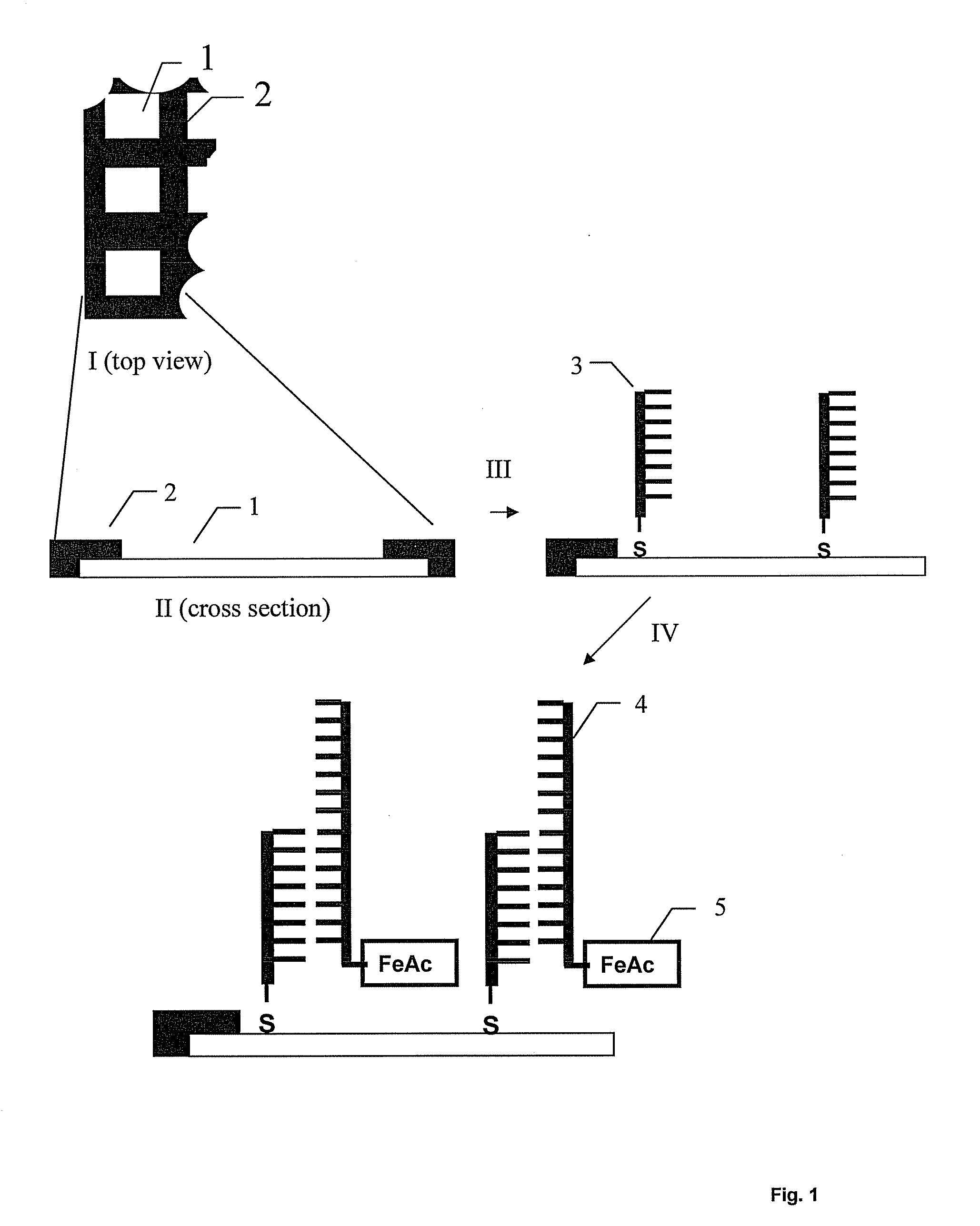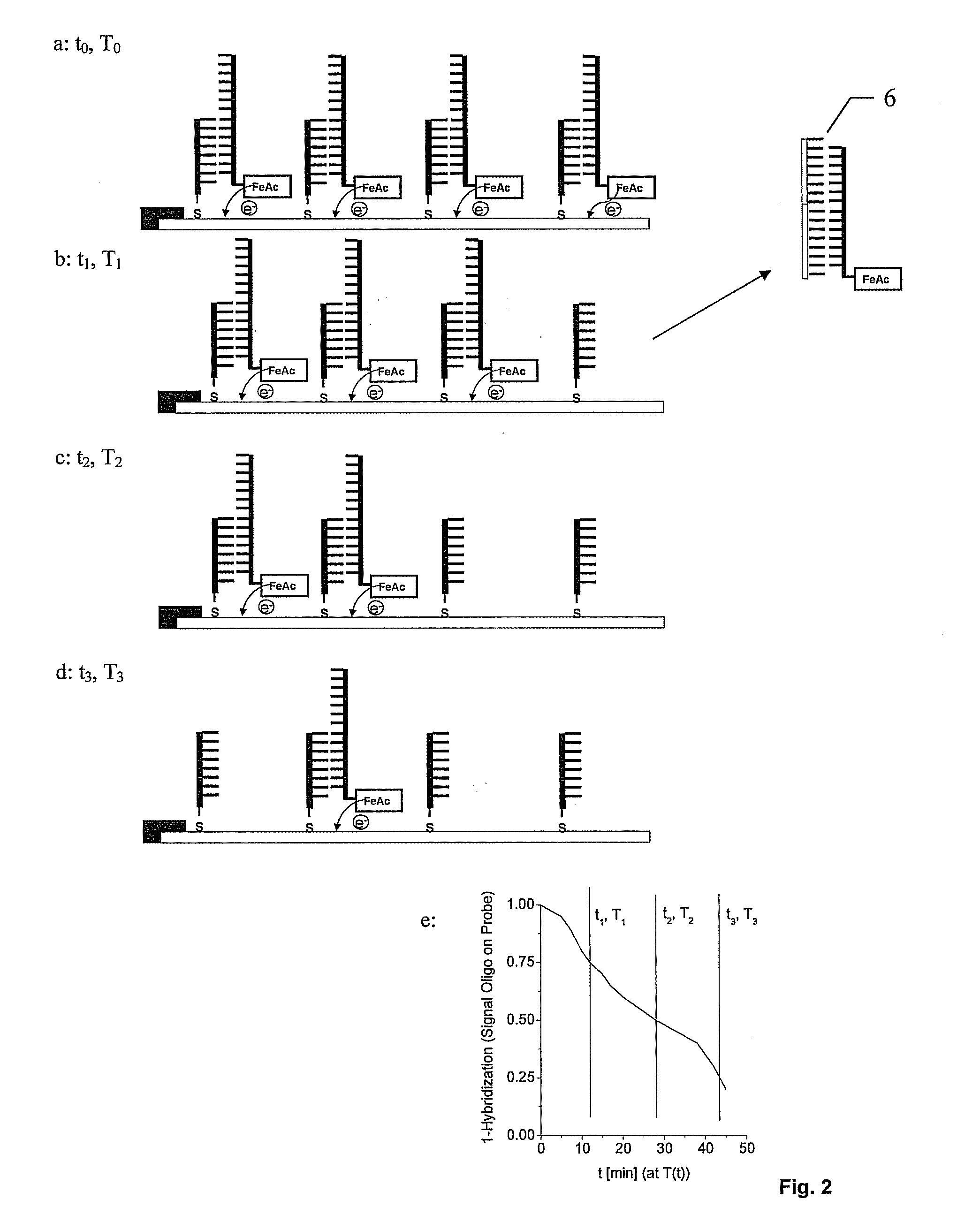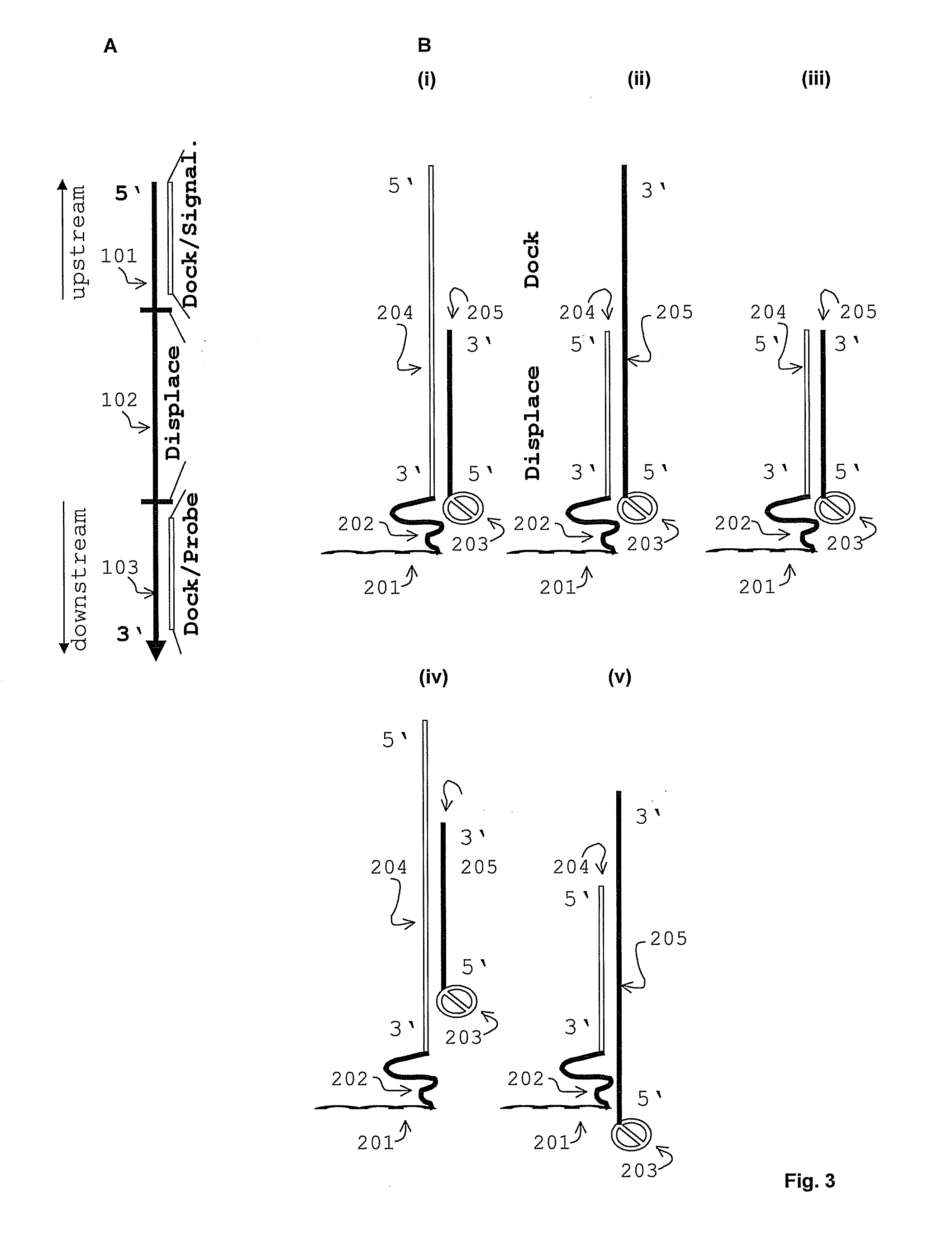Displacement assay for detecting nucleic acid oligomer hybridization events
a nucleic acid oligomer and displacement assay technology, applied in biochemistry apparatus, biochemistry apparatus and processes, enzymology/microbiology apparatus, etc., can solve the problems of serious disadvantage, proceeding displacement of signal nucleic acid oligomers by target nucleic acid oligomers, etc., to increase the precision of measurement results
- Summary
- Abstract
- Description
- Claims
- Application Information
AI Technical Summary
Benefits of technology
Problems solved by technology
Method used
Image
Examples
example 1
Preparing the N-Hydroxysuccinimide Active Ester of the Redox (or Fluorophore) Label
[0144]1 mmol of the respective carboxylic acid derivative of a fluorophore (e.g. fluorescein) or of a redox-active substance (e.g. ferrocene) and 1.1 mmol N-hydroxysuccinimide are dissolved in 15 ml anhydrous dioxane. 1.1 mmol carbodiimide (dissolved in 3 ml anhydrous dioxane) are cooled with ice and added dropwise to the carboxylic acid derivative. The reaction mixture is stirred for 16 h at RT, the resultant precipitate filtered off and the solvent drawn off. The residue is purified by silica gel chromatography (Merck silica gel 60, eluent: dichloromethane / ethyl acetate / heptane mixtures).
example 2
Preparing the Amino-Modified Oligonucleotides for Coupling the Active Ester Label of Ex. 1, or Thiol-Modified Oligonucleotides for Anchoring on Gold as Probe Nucleic Acid Oligomers
[0145]The synthesis of the oligonucleotides occurs in an automatic oligonucleotide synthesizer (Expedite 8909; ABI 384 DNA / RNA synthesizer) according to the synthesis protocols recommended by the manufacturer for a 1.0 μmol synthesis. As standard, the synthesis of the signal nucleic acid oligomers takes place on A-CPG as the support material. Modifications at the 5′-position of the oligonucleotides occur with a coupling step prolonged to 5 minutes. The amino modifier C2 dT (Glen Research 10-1037) is built into the sequences with the respective standard protocol.
[0146]The constitution of 3′-dithiol-modified probe oligonucleotides occurs on a 5-hydroxy-1,2-dithiane-4-O-dimethoxytrityl-modified CPG support, and further dithiol-modifications occur by means of 1,2-dithiane-4-O-dimethoxytrityl-5-[(2-cyanoethyl)-...
example 3
Converting the Amino-Modified Oligonucleotides (Ex. 2) with the N-Hydroxy Active Esters (Ex. 1)
[0148]The amino-modified oligonucleotides are dissolved in 0.1 M borate buffer (pH 8.5) and converted with the N-hydroxysuccinimide active esters dissolved in DMSO according to the protocol from Molecular Probes (Labeling Amine-Modified Oligonucleotides). The purification of the oligonucleotides occurs by means of RP—HPL chromatography according to standard protocols (eluent: 0.1 M triethylammonium acetate buffer, acetonitrile), the characterization by means of MALDI-TOF MS.
PUM
| Property | Measurement | Unit |
|---|---|---|
| temperature | aaaaa | aaaaa |
| temperature | aaaaa | aaaaa |
| melting temperature | aaaaa | aaaaa |
Abstract
Description
Claims
Application Information
 Login to View More
Login to View More - R&D
- Intellectual Property
- Life Sciences
- Materials
- Tech Scout
- Unparalleled Data Quality
- Higher Quality Content
- 60% Fewer Hallucinations
Browse by: Latest US Patents, China's latest patents, Technical Efficacy Thesaurus, Application Domain, Technology Topic, Popular Technical Reports.
© 2025 PatSnap. All rights reserved.Legal|Privacy policy|Modern Slavery Act Transparency Statement|Sitemap|About US| Contact US: help@patsnap.com



